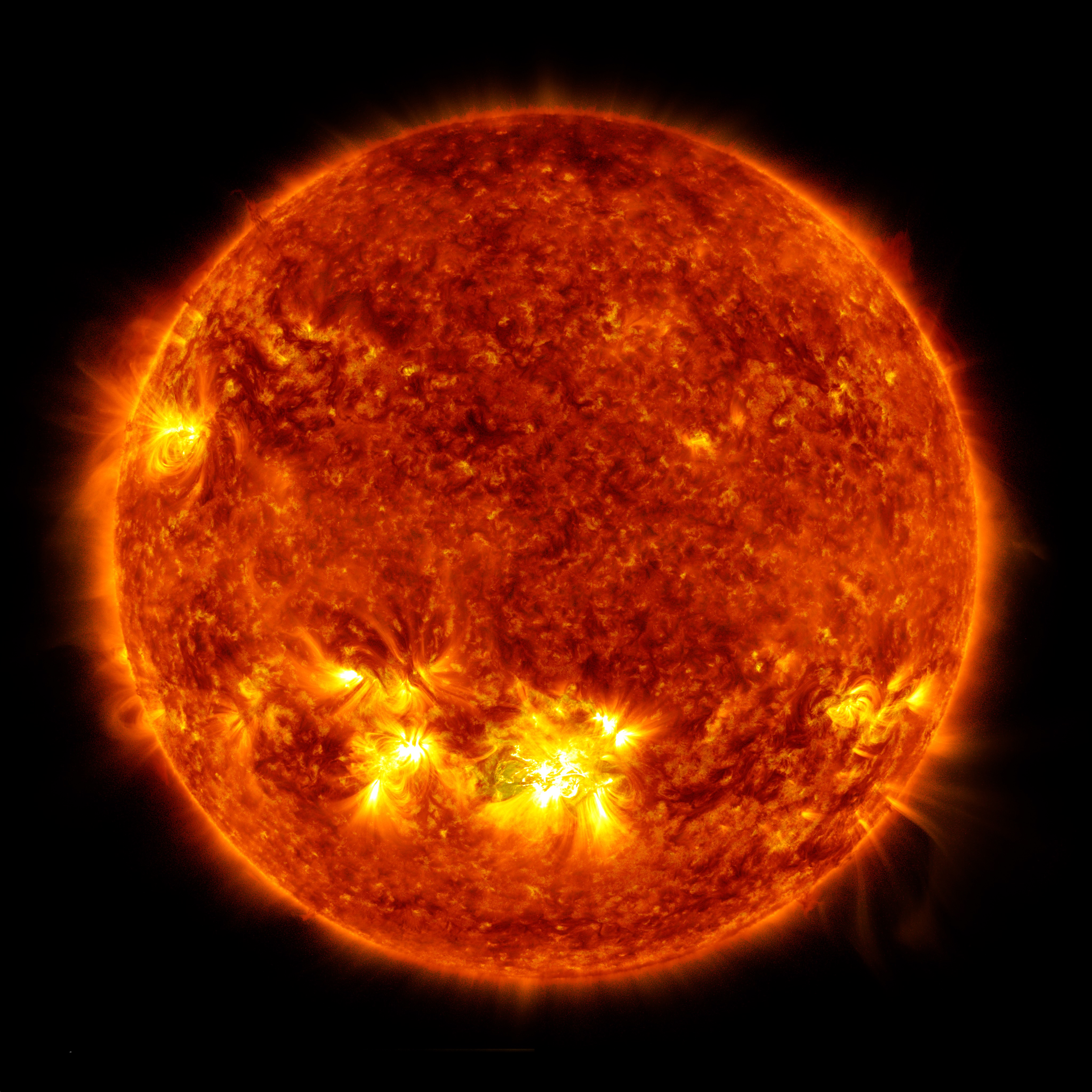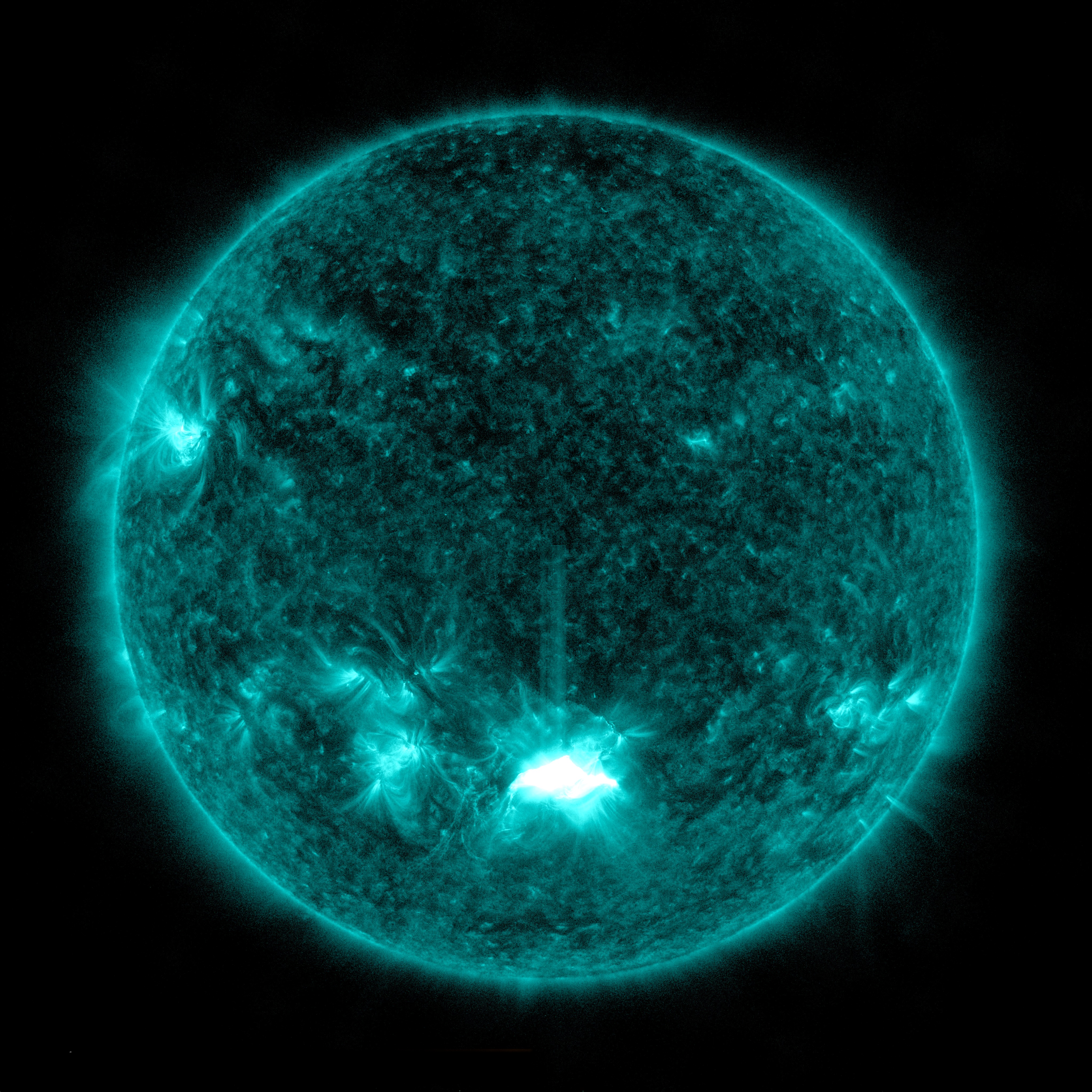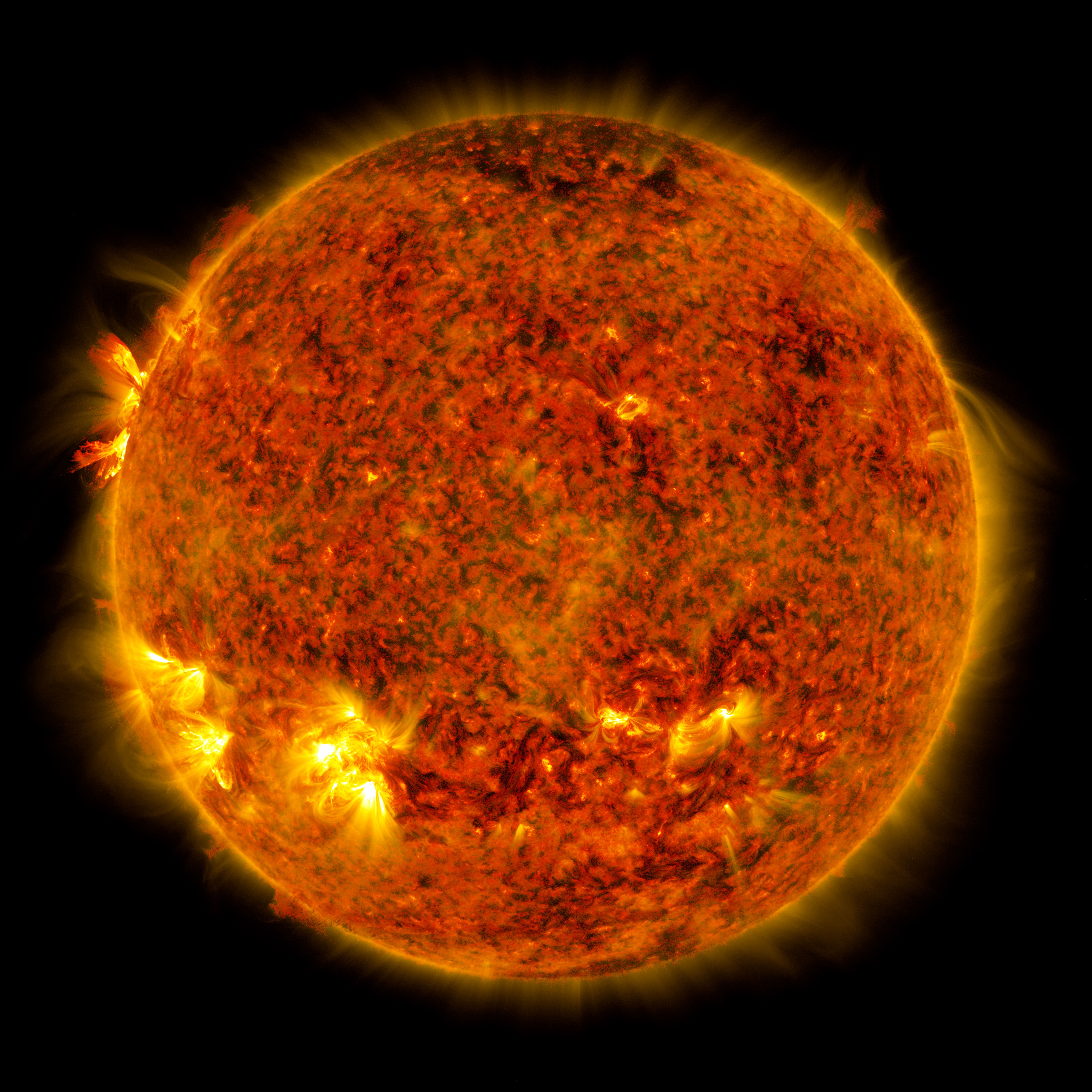Sun
ID: 13982
The Sun emitted a significant solar flare peaking at 11:35 a.m. EDT on Oct. 28, 2021. NASA’s Solar Dynamics Observatory, which watches the Sun constantly, captured an image of the event.
Solar flares are powerful bursts of radiation. Harmful radiation from a flare cannot pass through Earth’s atmosphere to physically affect humans on the ground, however — when intense enough — they can disturb the atmosphere in the layer where GPS and communications signals travel.
To see how such space weather may affect Earth, please visit NOAA's Space Weather Prediction Center http://spaceweather.gov/, the U.S. government’s official source for space weather forecasts, watches, warnings, and alerts. NASA works as the research arm of the nation’s space weather effort. NASA observes the Sun and our space environment constantly with a fleet of spacecraft that study everything from the Sun’s activity to the solar atmosphere, and to the particles and magnetic fields in the space surrounding Earth.
This flare is classified as an X1.0-class flare.
X-class denotes the most intense flares, while the number provides more information about its strength. An X2 is twice as intense as an X1, an X3 is three times as intense, etc. Flares that are classified X10 or stronger are considered unusually intense.
Earlier in the week, from late-afternoon on October 25th through mid-morning on the 26th, a different active region on the Sun gave a show of small flares and eruptions of plasma.



Active October Sun Emits X-class Flare
Solar flares are powerful bursts of radiation. Harmful radiation from a flare cannot pass through Earth’s atmosphere to physically affect humans on the ground, however — when intense enough — they can disturb the atmosphere in the layer where GPS and communications signals travel.
To see how such space weather may affect Earth, please visit NOAA's Space Weather Prediction Center http://spaceweather.gov/, the U.S. government’s official source for space weather forecasts, watches, warnings, and alerts. NASA works as the research arm of the nation’s space weather effort. NASA observes the Sun and our space environment constantly with a fleet of spacecraft that study everything from the Sun’s activity to the solar atmosphere, and to the particles and magnetic fields in the space surrounding Earth.
This flare is classified as an X1.0-class flare.
X-class denotes the most intense flares, while the number provides more information about its strength. An X2 is twice as intense as an X1, an X3 is three times as intense, etc. Flares that are classified X10 or stronger are considered unusually intense.
Earlier in the week, from late-afternoon on October 25th through mid-morning on the 26th, a different active region on the Sun gave a show of small flares and eruptions of plasma.



For More Information
Credits
Scott Wiessinger (KBR Wyle Services, LLC): Producer
Tom Bridgman (Global Science and Technology, Inc.): Data Visualizer
Kathalina Tran (SGT): Science Writer
Tom Bridgman (Global Science and Technology, Inc.): Data Visualizer
Kathalina Tran (SGT): Science Writer
Please give credit for this item to:
NASA's Goddard Space Flight Center. However, individual items should be credited as indicated above.
NASA's Goddard Space Flight Center. However, individual items should be credited as indicated above.
Short URL to share this page:
https://svs.gsfc.nasa.gov/13982
Mission:
SDO
Data Used:
Note: While we identify the data sets used in these visualizations, we do not store any further details nor the data sets themselves on our site.
This item is part of these series:
Narrated Movies
SDO - Visualizations
Heliophysics Breaking News
Keywords:
SVS >> Coronal Loop
SVS >> HDTV
SVS >> Music
GCMD >> Earth Science >> Sun-earth Interactions >> Solar Activity >> Solar Flares
SVS >> Space Weather
SVS >> SDO
SVS >> Edited Feature
SVS >> Solar Dynamics Observatory
SVS >> Heliophysics
SVS >> Corona
NASA Science >> Sun
SVS >> 4K
GCMD keywords can be found on the Internet with the following citation: Olsen, L.M., G. Major, K. Shein, J. Scialdone, S. Ritz, T. Stevens, M. Morahan, A. Aleman, R. Vogel, S. Leicester, H. Weir, M. Meaux, S. Grebas, C.Solomon, M. Holland, T. Northcutt, R. A. Restrepo, R. Bilodeau, 2013. NASA/Global Change Master Directory (GCMD) Earth Science Keywords. Version 8.0.0.0.0
https://svs.gsfc.nasa.gov/13982
Mission:
SDO
Data Used:
SDO/AIA/304 Filter also referred to as: AIA 304
JOINT SCIENCE OPERATIONS CENTER - 2021-10-25T20:00 - 2021-10-26T14:00UTSDO/AIA/171 Filter also referred to as: AIA 171
JOINT SCIENCE OPERATIONS CENTER - 2021-10-25T20:00 - 2021-10-26T14:00UTSDO/AIA/131 Filter also referred to as: AIA 131
JOINT SCIENCE OPERATIONS CENTER - 2021-10-28T12:30 to 2021-10-28T23:00UTThis item is part of these series:
Narrated Movies
SDO - Visualizations
Heliophysics Breaking News
Keywords:
SVS >> Coronal Loop
SVS >> HDTV
SVS >> Music
GCMD >> Earth Science >> Sun-earth Interactions >> Solar Activity >> Solar Flares
SVS >> Space Weather
SVS >> SDO
SVS >> Edited Feature
SVS >> Solar Dynamics Observatory
SVS >> Heliophysics
SVS >> Corona
NASA Science >> Sun
SVS >> 4K
GCMD keywords can be found on the Internet with the following citation: Olsen, L.M., G. Major, K. Shein, J. Scialdone, S. Ritz, T. Stevens, M. Morahan, A. Aleman, R. Vogel, S. Leicester, H. Weir, M. Meaux, S. Grebas, C.Solomon, M. Holland, T. Northcutt, R. A. Restrepo, R. Bilodeau, 2013. NASA/Global Change Master Directory (GCMD) Earth Science Keywords. Version 8.0.0.0.0











